PRESTO PLANS
Sent straight to your inbox
CLICK HERE TO ACCESS
Sign up to receive 10 ready-to-use ELA resources your students will love!
10 FREE ELA RESOURCES
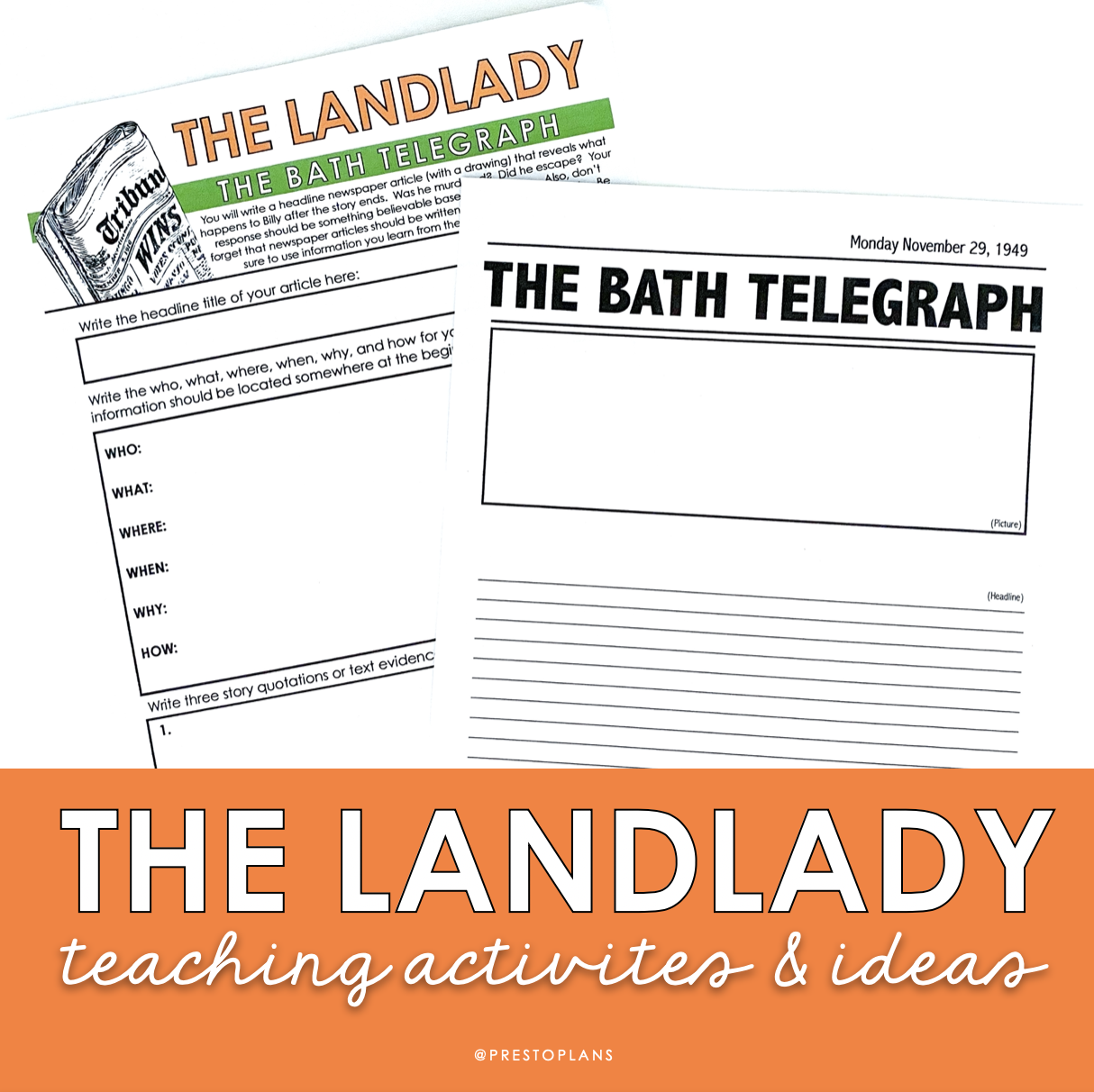
Teaching The Landlady by Roald Dahl
If you are teaching “The Landlady” by Roald Dahl, you may be looking for tips and strategies for analyzing the story. I wanted to take this opportunity to share my best tips for helping you navigate all elements of this spooky tale with your students!
In Roald Dahl’s story, a young businessman travels to a local bed and breakfast run by a landlady. The only two other guests who have ever stayed at the B&B have names that he recognizes, and the reader may soon learn that the landlady is not as innocent as she initially seems.
So, where to begin when teaching “The Landlady?” Below are some tips to bring this story to life for your middle or high school students.
Build Background Information
Before introducing any short story to your students, I would suggest providing any context that students may need to fully understand the background of the story. When teaching “The Landlady,” I like to provide relevant information on the following two elements of context in particular:
- Author
- Publication
Start by giving students a little bit of background information on Roald Dahl himself. I explain to students that Dahl’s books have sold more than 250 million copies, for example, and that he has been referred to as “one of the greatest storytellers for children of the 20th century.” I also like to show students clips from books that have been adapted into movies that they will likely recognize. For this, I refer to adaptations like Charlie and the Chocolate Factory, James and the Giant Peach, and Matilda. These examples highlight Dahl’s distinctively strange and creative style.
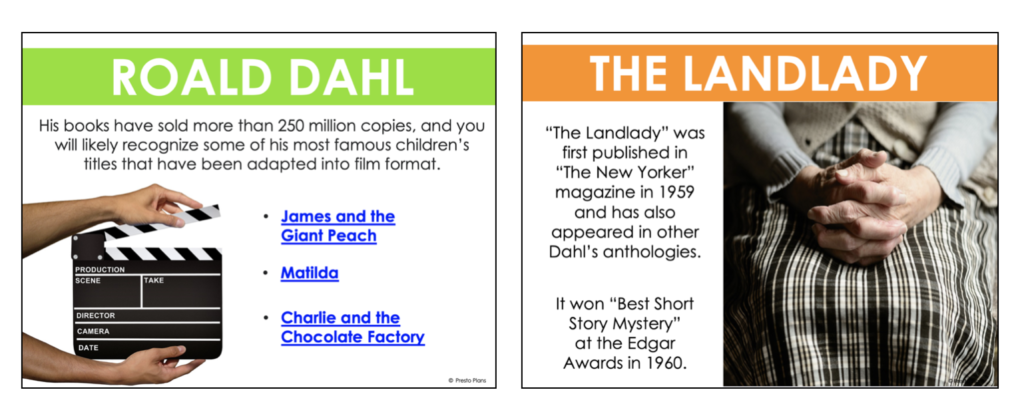
I also tell students that “The Landlady” was first published in The New Yorker in 1959 and was awarded an award for “Best Short Story Mystery” the following year. I then have students make predictions about the story based on its intriguing title. One of the great things about Dahl’s short story is the way it subverts the reader’s expectations. Students are often way off in their predictions. The title “The Landlady,” which refers simply to a woman who rents out property to a tenant, evokes something along the lines of a rent disagreement when in reality the story is about something much grimmer!
Pre-Reading Vocabulary
Before diving into the story, I like to give a preview of some of the included vocabulary to students. There are some challenging words used in “The Landlady,” some of which whose meanings are relevant to understanding the overall story. Instead of dealing with them as they come in the text, I prepare students for them ahead of time through a pre-reading activity. I give students quotes from the text like the ones below with the vocabulary words bolded. They need to match each one with the correct definition by reading it in context to get a mystery word. Here are a couple of examples:
- “Now and again, he caught a whiff of a peculiar smell that seemed to emanate directly from her person
- “Each word was like a large black eye staring at him through the glass, holding him, compelling him, forcing him to stay where he was and not to walk away from that house”
What’s great about this pre-reading activity is that it helps broaden students’ vocabulary while also giving them a snapshot of what’s to come when they read the story. This, too, helps with comprehension!
During and Post Reading
There are parts of “The Landlady” that require readers to make inferences in order to understand the significance. Because of this, I like to stop and ask questions every so often while students are reading. This helps ensure that everyone is catching onto the more subtle elements of the story—important clues Dahl leaves for the reader.
Reading Questions
Then, once they’ve finished the story, I try to ensure comprehension by providing students with reading questions that allow them to dig a little deeper into the key literary elements of the story. For these, I focus largely on foreshadowing, irony (both verbal and dramatic), and setting, all crucial elements of “The Landlady.” I usually let students work on these in groups, and then we go over the answers together as a class afterward. I try to have my own answers prepared ahead of time for this. Doing so helps ensure the ensuing discussion is as focused as possible!
Characterization Text Evidence
Another element of the text that I focus on is characterization. I use the characterization of Billy Weaver and the landlady to get students to practice using text evidence. In my experience, students tend to struggle to provide evidence to support claims they make about a text. To help them with this, I ask students to identify three character traits for Billy and the landlady. They need to provide text evidence to support their choices in the form of a quote or a description of events. If they say Billy is “trusting,” for example, they need to cite text evidence that supports this.
Analysis Notes
At this point, I like to fill in the gaps by doing just a little bit of direct instruction. This is where I go deeper into different elements of the story with some analysis notes of my own. For these, I analyze individual characters in more detail, discuss important themes that emerge (I focus on the theme that appearances can be deceiving), and talk about the story’s mood, for example.
The mood is an especially important aspect of “The Landlady”—one that students might not pick up on right away. The slow-building suspense in the story establishes a mood that is sinister and uncomfortable for readers. It is largely responsible for the overall spookiness of Dahl’s tale!
Video Interpretation
Have you seen any video adaptations of Roald Dahl’s “The Landlady” yet? One thing I like to do when teaching this story is show students this video interpretation of the story. I tell them to note any differences they notice between this adaptation and the story itself. We discuss the similarities and differences as together as a class after it’s finished.
Creative Writing: The Bath Telegraph
As a final creative assignment for teaching Roald Dahl’s “The Landlady,” I have students do the Creative Writing Bath Telegraph activity. For this assignment, students write a headline newspaper article. In the article, students will reveal what happens to Billy after the story ends (according to what they think happens). For example, they might write an article in which they talk about how Billy escaped from the house. Their responses should be something believable based on the story. I tell students that their articles should be written in a formal objective style. They must also use the information they read in the story to ground their articles. They will also draw a picture to accompany their headline article.
There you have it! I have always enjoyed teaching “The Landlady” by Roald Dahl, particularly around Halloween, and I hope you do too. If you would like to grab a ready-to-teach bundle with all the resources mentioned above, you can grab all of my resources by clicking the button below. Prefer to purchase it on TpT? No problem, just click here.
Here is what a few teachers who have used these resources already had to say:
- “This was incredibly organized and my students were incredibly into the story. The booklet was perfect to make sure they understood the story and characterization.” Katharine C.
- “This was a great way to get the students to delve deeper into the text. They were able to make connections to some of the more subtle points in the story.” Beckie L.
- “This was a great resource. It was better than giving them a story with questions. Instead, these questions were more discussion focused so we could all talk about the answers together instead of finding surface level answers and not thinking further. I loved the newspaper article as well! The kids were very creative with that.” Alyssa E.
Looking for more stories like this one? Check out this blog post on my favorite spooky stories to teach in middle and high ELA.
Search the blog for what you are teaching
GIVEAWAYS
sent straight to your inbox!

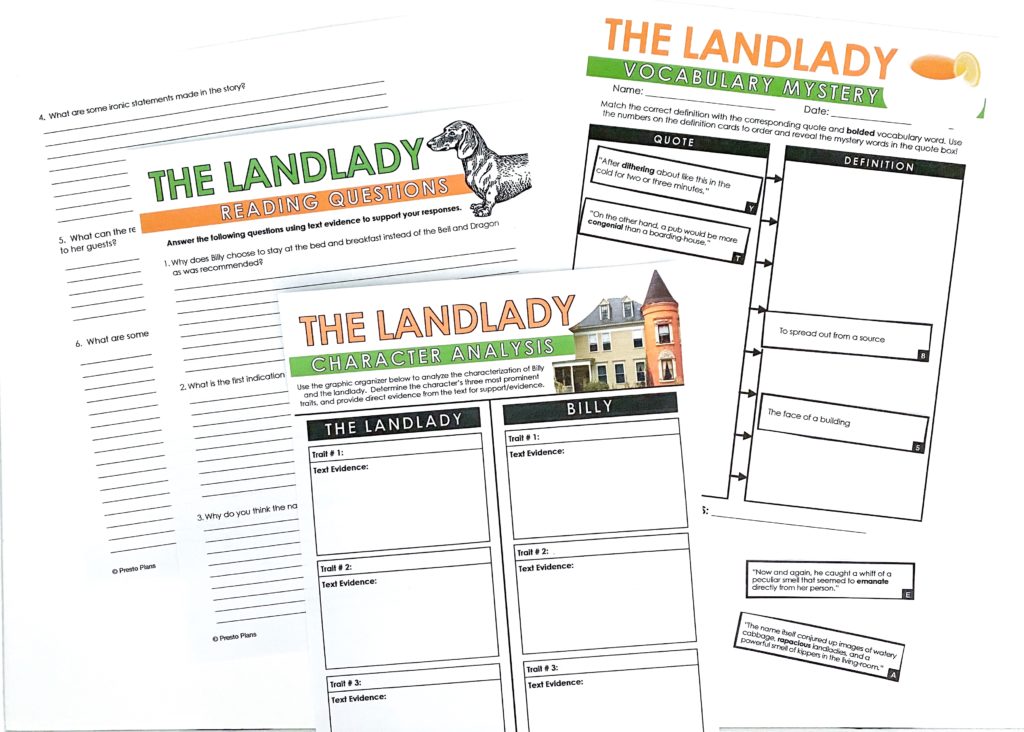
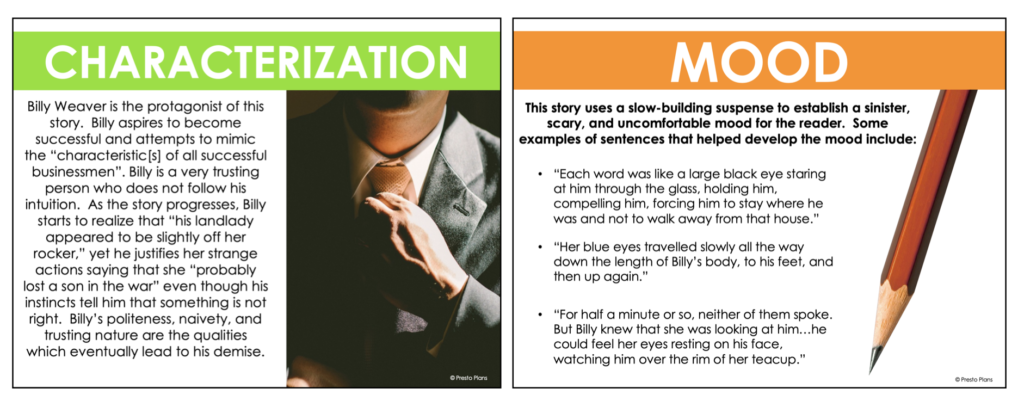
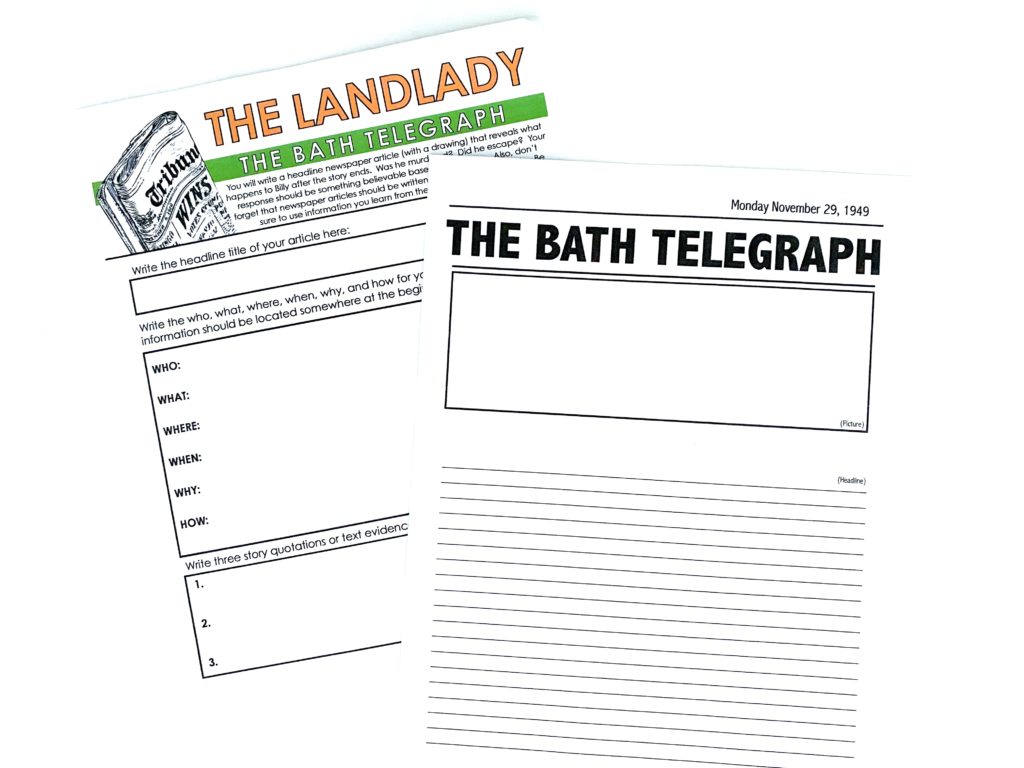

share this post